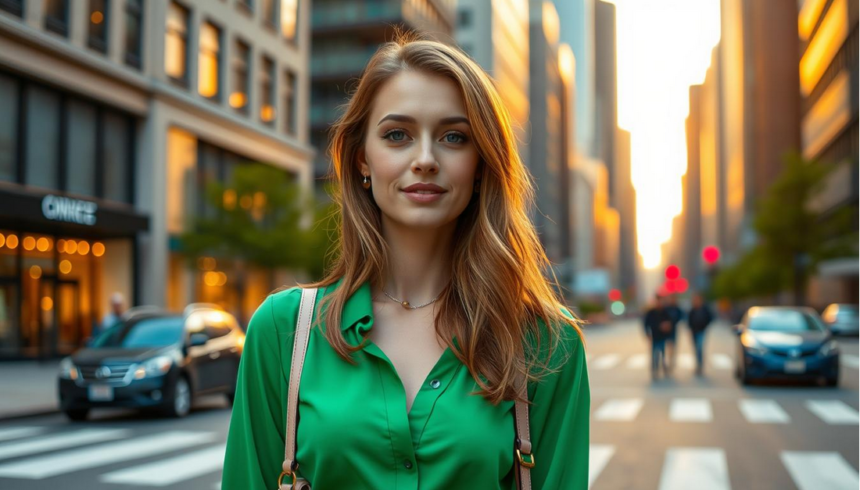India customers to view on amazon.in
Wearing Color Theory Like a Fashion Pro
Mastering color theory can elevate your style and make a significant difference in creating stylish and harmonious outfits. Understanding how to combine colors effectively is key to looking polished and put-together.
- The Fundamentals of Color Theory in Fashion
- Understanding the Color Wheel
- Primary, Secondary, and Tertiary Colors
- Warm vs. Cool Colors in Clothing
- How Color Theory Influences Your Fashion Choices
- The Psychology Behind Color Choices
- How Colors Affect Mood and Perception
- Creating Visual Impact with Strategic Color Use
- Identifying Your Personal Color Palette
- Determining Your Skin Undertone
- Colors That Complement Your Natural Features
- Building a Wardrobe Around Your Best Colors
- Wearing Color Theory Like a Fashion Pro: Essential Combinations
- Complementary Color Pairings
- Analogous Color Schemes
- Triadic and Tetradic Color Arrangements
- Monochromatic Styling Techniques
- Mastering Color Blocking in Your Outfits
- Principles of Effective Color Blocking
- Balancing Bold and Neutral Elements
- Color Blocking for Different Body Types
- Seasonal Color Theory Applications
- Spring: Fresh and Vibrant Palettes
- Summer: Soft and Cool Combinations
- Fall: Rich and Warm Ensembles
- Winter: Bold and Contrasting Statements
- Accessories and Color Coordination
- Using Accessories as Color Accents
- Jewelry Metals and Color Harmony
- Handbags, Shoes, and Color Statement Pieces
- Building a Color-Conscious Capsule Wardrobe
- Core Neutral Pieces as Foundations
- Strategic Color Additions for Versatility
- Seasonal Updates to Your Color Palette
- Conclusion: Expressing Your Style Through Informed Color Choices
- FAQ
- What is color theory, and how does it apply to fashion?
- How do I determine my personal color palette?
- What are some essential color combinations for creating stylish outfits?
- How can I master color blocking in my outfits?
- How do I apply color theory across different seasons?
- Can accessories really make a difference in color coordination?
- How do I build a color-conscious capsule wardrobe?
- What are some common mistakes to avoid when applying color theory to fashion?
- How can I stay up-to-date with the latest fashion color trends?

By applying color theory principles, you can create a wardrobe that is both stylish and versatile. Whether you’re looking to update your wardrobe or simply want to learn how to dress more effectively, understanding color theory is essential.
Key Takeaways
- Understand the basics of color theory to improve your fashion sense
- Learn how to create harmonious color combinations
- Discover how to apply color theory to your wardrobe
- Get tips on how to wear color theory like a pro
- Elevate your style with fashionable color combinations
The Fundamentals of Color Theory in Fashion
Color theory is the backbone of fashion, guiding us in selecting colors that complement our features. It’s not just about picking colors we like; it’s about understanding how they work together to create a harmonious look.
Understanding the Color Wheel
The color wheel is a circular representation of colors, showcasing how they relate to each other. It’s a fundamental tool in color theory, helping us identify primary, secondary, and tertiary colors.

Primary, Secondary, and Tertiary Colors
Primary colors are red, blue, and yellow. They can’t be created by mixing other colors together. Secondary colors are green (created by mixing blue and yellow), orange (red and yellow), and purple (blue and red). Tertiary colors are made by mixing primary and secondary colors, resulting in hues like blue-green or yellow-orange.
Warm vs. Cool Colors in Clothing
Colors can be categorized as warm or cool based on their undertones. Warm colors like red, orange, and yellow tend to evoke warmth and are often associated with energy. Cool colors like blue, green, and purple are calming and can create a soothing effect.
How to Identify Your Color Temperature
To determine your color temperature, look at the veins on the inside of your wrist. If they appear blue or purple, you have a cool undertone. If they look green, you have a neutral undertone. If they seem yellow or golden, you have a warm undertone. This simple test can help you choose colors that complement your skin tone.
By understanding these fundamentals, you can make informed decisions when selecting your wardrobe, ensuring that your clothes not only look great but also enhance your natural features.
How Color Theory Influences Your Fashion Choices
Understanding how color theory influences your fashion choices can elevate your style to new heights. By applying the principles of color theory, you can create a wardrobe that not only looks great but also reflects your personality and style.
The Psychology Behind Color Choices
The colors you choose to wear can have a significant impact on how you feel and how others perceive you. Different colors can evoke different emotions and moods. For instance, wearing red can make you feel more confident and energetic, while blue can have a calming effect.
How Colors Affect Mood and Perception
Colors can influence your mood and how others perceive you. Warm colors like orange and yellow can create a sense of warmth and energy, while cool colors like green and blue can be calming and soothing. Understanding the emotional impact of different colors can help you make informed fashion choices.
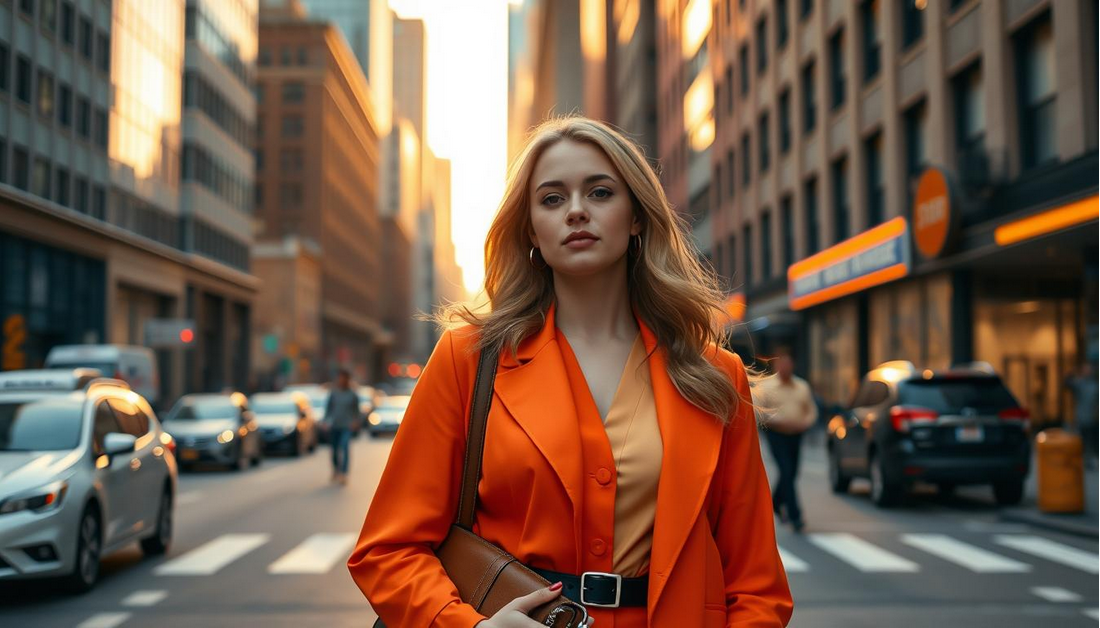
Creating Visual Impact with Strategic Color Use
Strategic use of color can create a visual impact, drawing attention to your best features and creating a balanced look. One key aspect of this is understanding color proportions in outfits.
Color Proportions in Outfits
Balancing color proportions is crucial for creating a harmonious and stylish outfit. A general rule of thumb is to use the 60-30-10 rule: 60% of a dominant color, 30% of a secondary color, and 10% of an accent color.
| Color Proportion | Description | Example |
|---|---|---|
| 60% | Dominant color | Navy blue dress |
| 30% | Secondary color | White blouse |
| 10% | Accent color | Red scarf |
By applying these principles and experimenting with different fashionable color combinations, you can develop a personal style that is both stylish and reflective of your personality.
Identifying Your Personal Color Palette
Your personal color palette is the key to making informed fashion choices that enhance your natural beauty. Understanding the colors that complement your skin tone, hair color, and personal style can elevate your wardrobe and simplify your fashion decisions.
Determining Your Skin Undertone
The first step in identifying your personal color palette is determining your skin undertone. Skin undertones are generally categorized as cool, warm, or neutral. To determine yours, look at the veins on the inside of your wrist. If they appear blue or purple, you have a cool undertone. If they look green, you have a neutral undertone, and if they seem yellow or golden, you have a warm undertone.
Colors That Complement Your Natural Features
Once you’ve determined your skin undertone, you can identify colors that complement your natural features. For cool undertones, look for colors like emerald green, sapphire blue, and lavender. Warm undertones are enhanced by colors such as coral, golden yellow, and terracotta. Neutral undertones can pull off a wide range of colors, including soft pastels, rich berry shades, and earthy tones.

Building a Wardrobe Around Your Best Colors
With your personal color palette in mind, start building a wardrobe that incorporates these flattering shades. Begin with essential pieces like tops, bottoms, and dresses in your best colors. You can then add accessories and statement pieces that complement these core items.
Creating a Color Swatch Reference
To make shopping and styling easier, create a color swatch reference. This can be a physical notebook or a digital document where you note down the colors that look good on you, along with examples or swatches. Refer to this guide when shopping or planning outfits to ensure you’re always wearing colors that enhance your natural beauty.
- Identify 3-5 core colors that complement your skin tone.
- Create a digital or physical swatch book with these colors.
- Use this reference to guide your shopping and styling decisions.
By following these steps, you can develop a personal color palette that simplifies your fashion choices and enhances your style.
Wearing Color Theory Like a Fashion Pro: Essential Combinations
Mastering color combinations is key to elevating your style game. Fashion professionals rely on a deep understanding of color theory to create visually appealing outfits. In this section, we’ll explore the essential color combinations that can transform your wardrobe.
Complementary Color Pairings
Complementary colors are pairs of colors that are opposite each other on the color wheel. Using complementary colors in fashion can create striking and harmonious outfits. For example, pairing blue with orange or red with green can make a bold statement. To incorporate this technique into your wardrobe, try adding a complementary colored accessory to a dominant colored outfit.
- Blue and orange for a bold, eye-catching look
- Red and green for a festive, holiday-inspired outfit
- Yellow and purple for a bright, contrasting combination
Analogous Color Schemes
Analogous color schemes involve using colors that are next to each other on the color wheel. This creates a smooth, cohesive look that’s easy on the eyes. For instance, combining blue, green, and yellow-green can result in a soothing and stylish outfit.
To apply analogous color schemes, choose a dominant color and then select its neighboring colors to create a harmonious palette.
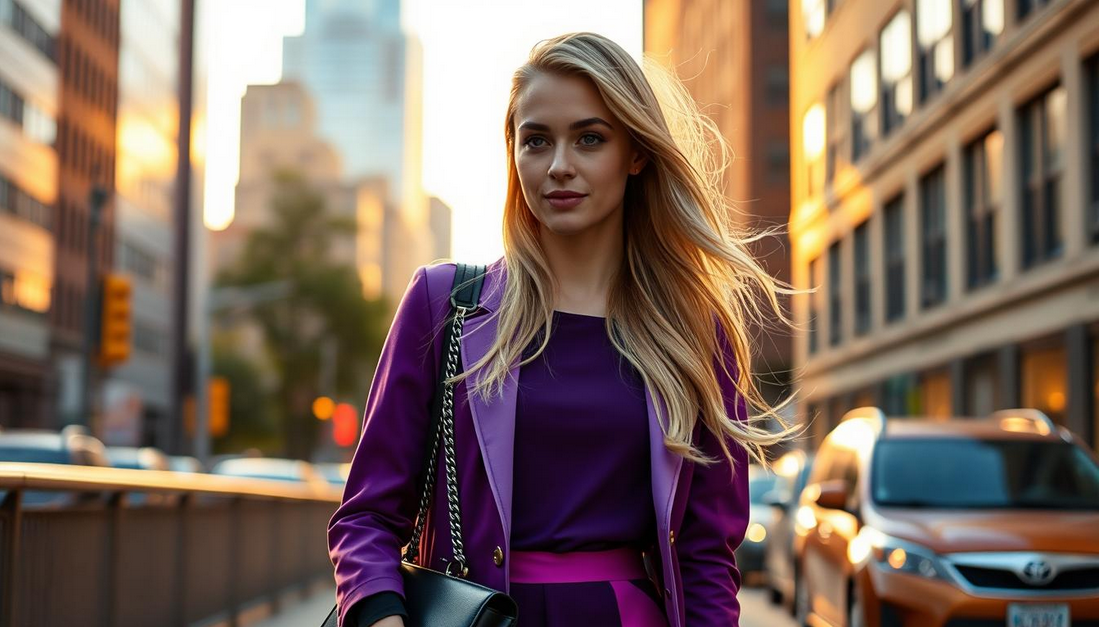
Triadic and Tetradic Color Arrangements
For a more complex and interesting look, try triadic or tetradic color arrangements. Triadic involves using three colors equally spaced from each other on the color wheel, while tetradic uses four colors, forming two complementary pairs.
- Triadic: Red, yellow, and blue for a vibrant, playful look
- Tetradic: Blue, orange, red, and green for a dynamic, contrasting outfit
Monochromatic Styling Techniques
Monochromatic styling involves wearing different shades of the same color. This creates a cohesive, streamlined look that’s both stylish and sophisticated. To master monochromatic styling, experiment with different textures and shades of your chosen color.
Celebrity-Inspired Color Combinations
Many celebrities are known for their impeccable style, often showcasing celebrity color styling secrets on the red carpet. For example, a monochromatic outfit in various shades of blue can be both elegant and eye-catching, as seen on celebrities like Emma Stone.
By incorporating these essential color combinations into your wardrobe, you’ll be well on your way to dressing like a fashion pro. Experiment with different techniques to find what works best for you and your personal style.
Mastering Color Blocking in Your Outfits
Elevate your fashion game by incorporating the principles of color blocking into your daily style. Color blocking is a powerful technique that involves pairing solid blocks of color to create visually appealing outfits.
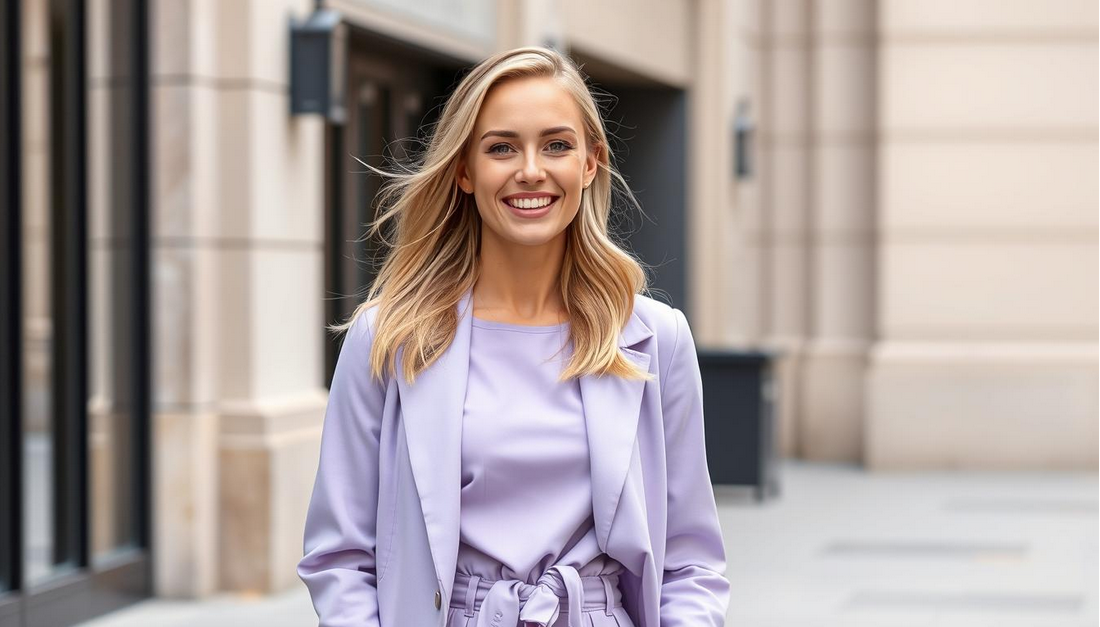
Principles of Effective Color Blocking
Effective color blocking is about understanding how different colors interact. It’s essential to choose colors that complement each other. You can use the color wheel to identify harmonious color combinations.
- Start with a neutral base and add bold colors as accents.
- Experiment with different shades and tones to find what works best for you.
- Consider the 60-30-10 rule: 60% neutral, 30% secondary color, and 10% accent color.
Balancing Bold and Neutral Elements
Balancing bold colors with neutral elements is crucial for a cohesive look. Neutral colors like black, white, beige, or navy can help tone down bold colors.
Tips for balancing:
- Pair bold tops with neutral bottoms.
- Use neutral accessories to balance bold outfits.
Color Blocking for Different Body Types
Color blocking can be adapted to flatter different body types. For example, petite individuals can use color blocking to create a lengthening effect, while curvier figures can use it to draw attention to their upper body.
Street Style Examples of Successful Color Blocking
Looking at street style can provide inspiration for your color blocking endeavors. Celebrities and influencers often showcase innovative color combinations that can be emulated.
- Observe how they balance bold colors with neutrals.
- Note the use of accessories to enhance the color blocking effect.
By mastering color blocking, you can add a new dimension to your fashion choices, making your outfits more interesting and stylish.
Seasonal Color Theory Applications
Each season brings its own unique color palette, influencing how we dress and express ourselves. Understanding and applying seasonal color theory can elevate your style and ensure you’re always fashion-forward.
Spring: Fresh and Vibrant Palettes
Spring is all about renewal and vibrant colors. Pastel shades and bright hues dominate the spring color palette, offering a fresh and youthful look. Consider incorporating colors like lavender, mint green, and sunshine yellow into your wardrobe for a stylish spring look that embodies “spring color theory outfits.”

Summer: Soft and Cool Combinations
Summer fashion is characterized by soft, cool colors that provide relief from the heat. Shades like sky blue, coral, and seafoam green are perfect for creating a cool and stylish summer look, fitting well within the “summer color palette fashion.”
“Summer is the time to experiment with bright and bold colors,”
says fashion expert, Anna Wintour.
Fall: Rich and Warm Ensembles
As fall arrives, the color palette shifts to rich, warm tones. Earthy shades like olive green, terracotta, and golden brown create cozy and inviting outfits, ideal for “fall fashion color coordination.” Layering different textures and shades can add depth to your fall ensembles.
Winter: Bold and Contrasting Statements
Winter fashion is all about making bold statements with contrasting colors. Deep jewel tones like emerald green, sapphire blue, and ruby red are staples of the winter wardrobe, aligning with the “winter color wheel fashion.” Mixing and matching these bold colors with neutral shades can create striking outfits.
Transitional Season Color Strategies
As seasons transition, it’s essential to have a strategy for updating your wardrobe. Neutral pieces are key during transitional periods, as they can be easily mixed with seasonal colors. For effective “transitional season color strategies,” consider investing in timeless neutrals like black, white, beige, and navy.
- Start by incorporating seasonal colors through accessories.
- Gradually introduce new seasonal pieces into your wardrobe.
- Use a color wheel to find harmonious color combinations.
Accessories and Color Coordination
To master the art of wearing color theory like a pro, one must not overlook the power of accessories. Accessories can make or break an outfit, and when it comes to color coordination, they play a starring role. By thoughtfully selecting accessories, you can elevate your style and create a cohesive, visually appealing look.
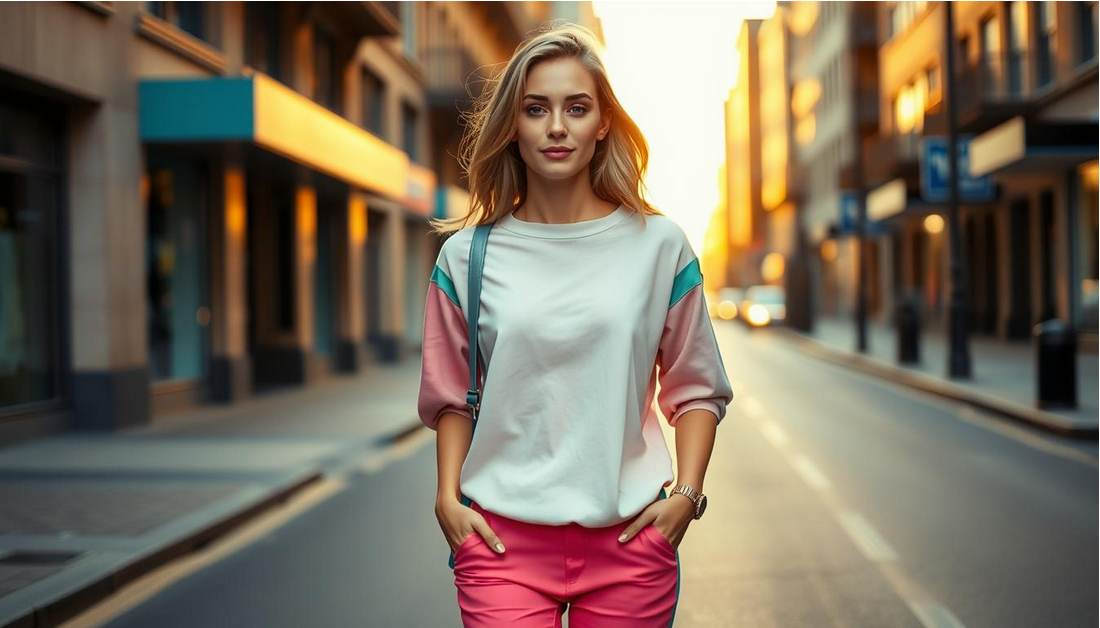
Using Accessories as Color Accents
Accessories such as scarves, hats, and belts can be used as color accents to add a pop of color to your outfit. By choosing accessories in a color that complements your clothing, you can create a harmonious and stylish look. For instance, if you’re wearing a neutral-colored dress, you can add a brightly colored scarf to create a focal point.
Jewelry Metals and Color Harmony
The type of jewelry metal you choose can significantly impact the overall color harmony of your outfit. Gold, silver, and rose gold are popular options, each with its unique characteristics. For example, gold jewelry pairs well with warm-toned clothing, while silver complements cool tones. Mixing metals can add depth to your look, but it’s essential to do so thoughtfully to avoid visual discord.
“The right jewelry can elevate an outfit from basic to brilliant.” –
Fashion Expert
Handbags, Shoes, and Color Statement Pieces
Handbags and shoes are not just functional; they can also be used as color statement pieces. A bold, brightly colored handbag or a pair of shoes can add a much-needed splash of color to an otherwise monochromatic outfit. When choosing these items, consider the color wheel and select hues that either complement or contrast with your clothing.
Mixing Patterns Through Color Coordination
Mixing patterns can be challenging, but by focusing on color coordination, you can create a cohesive look. Choose patterns that share a common color or have complementary colors. For example, pairing a striped top with a floral skirt can work well if they share a similar color palette. The key is to balance bold patterns with more subtle ones to avoid visual overload.
Building a Color-Conscious Capsule Wardrobe
Building a wardrobe that’s both minimal and maximally stylish requires a deep dive into color theory. A color-conscious capsule wardrobe is not just about reducing the number of items you own, but also about creating a collection that works harmoniously together.
Core Neutral Pieces as Foundations
Neutral colors such as black, white, beige, and navy serve as the foundation of a versatile capsule wardrobe. These colors are timeless and can be mixed-and-matched with ease, providing a solid base for your wardrobe.
Strategic Color Additions for Versatility
While neutrals form the backbone, strategic color additions can enhance the versatility of your wardrobe. Introducing 2-3 complementary colors that resonate with your personal style can significantly increase the number of outfit combinations. For instance, adding burgundy or olive green can add depth to your outfits.
Seasonal Updates to Your Color Palette
Updating your color palette seasonally can keep your wardrobe fresh. For example, spring might call for pastel hues, while winter could introduce deeper, richer tones. This approach ensures your wardrobe stays relevant and exciting.
Color Planning for Maximum Outfit Combinations
Effective color planning is crucial for maximizing outfit combinations. Consider creating a table to visualize how different colors work together:
| Color | Pairs Well With | Outfit Combinations |
|---|---|---|
| Navy Blue | White, Light Grey | 5 |
| Burgundy | Black, Dark Grey | 4 |
| Beige | Navy, Olive Green | 6 |
By strategically planning your color palette, you can significantly increase the versatility of your capsule wardrobe.

Conclusion: Expressing Your Style Through Informed Color Choices
By understanding and applying the principles of color theory, you can elevate your fashion sense and develop a personal style that is both stylish and authentic. Making informed color choices allows you to create a wardrobe that not only looks great but also reflects your personality and confidence.
Experimenting with different color combinations and techniques, such as color blocking and monochromatic styling, can help you build color confidence in fashion. As you become more comfortable with expressing personal style through color, you’ll find it easier to create outfits that make you feel confident and stylish.
With confident color dressing, the possibilities are endless. You can create a capsule wardrobe that is both versatile and stylish, and make informed decisions when adding new pieces to your collection. By incorporating the principles of color theory into your fashion choices, you’ll be well on your way to building a wardrobe that truly represents your personal style.
FAQ
What is color theory, and how does it apply to fashion?
Color theory is a set of principles used to create harmonious color combinations. In fashion, it helps individuals choose colors that complement their skin tone, personal style, and the occasion, making their outfits more visually appealing.
How do I determine my personal color palette?
To determine your personal color palette, start by identifying your skin undertone (cool, warm, or neutral). Then, experiment with different colors to see which ones make you look healthy and vibrant. You can also create a color swatch reference to help guide your wardrobe choices.
What are some essential color combinations for creating stylish outfits?
Some essential color combinations include complementary, analogous, triadic, and monochromatic schemes. Complementary colors create contrast, analogous colors produce a harmonious palette, triadic colors offer a balanced look, and monochromatic styling involves different shades of the same color.
How can I master color blocking in my outfits?
To master color blocking, start by understanding the principles of effective color blocking, such as balancing bold and neutral elements. Consider your body type and the occasion when choosing colors to block. You can also draw inspiration from street style examples and celebrity fashion.
How do I apply color theory across different seasons?
To apply color theory across different seasons, focus on the characteristic color palettes of each season. For example, spring is associated with fresh and vibrant colors, while winter is associated with bold and contrasting statements. Update your wardrobe seasonally to reflect these color trends.
Can accessories really make a difference in color coordination?
Yes, accessories can greatly impact color coordination. Use accessories like jewelry, handbags, and shoes to add color accents, create harmony, or make a statement. Mixing patterns through thoughtful color coordination can also add depth to your outfits.
How do I build a color-conscious capsule wardrobe?
To build a color-conscious capsule wardrobe, start with core neutral pieces that can be mixed and matched. Add strategic color pieces to create versatility, and update your color palette seasonally. Focus on color planning to maximize outfit combinations and reduce decision fatigue.
What are some common mistakes to avoid when applying color theory to fashion?
Common mistakes include not considering your skin undertone, overusing bold colors, and neglecting to balance colors in an outfit. Be mindful of these pitfalls and experiment with different color combinations to find what works best for you.
How can I stay up-to-date with the latest fashion color trends?
Follow fashion influencers, bloggers, and brands on social media to stay informed about the latest color trends. You can also look to celebrity fashion, street style, and seasonal color palettes for inspiration.

